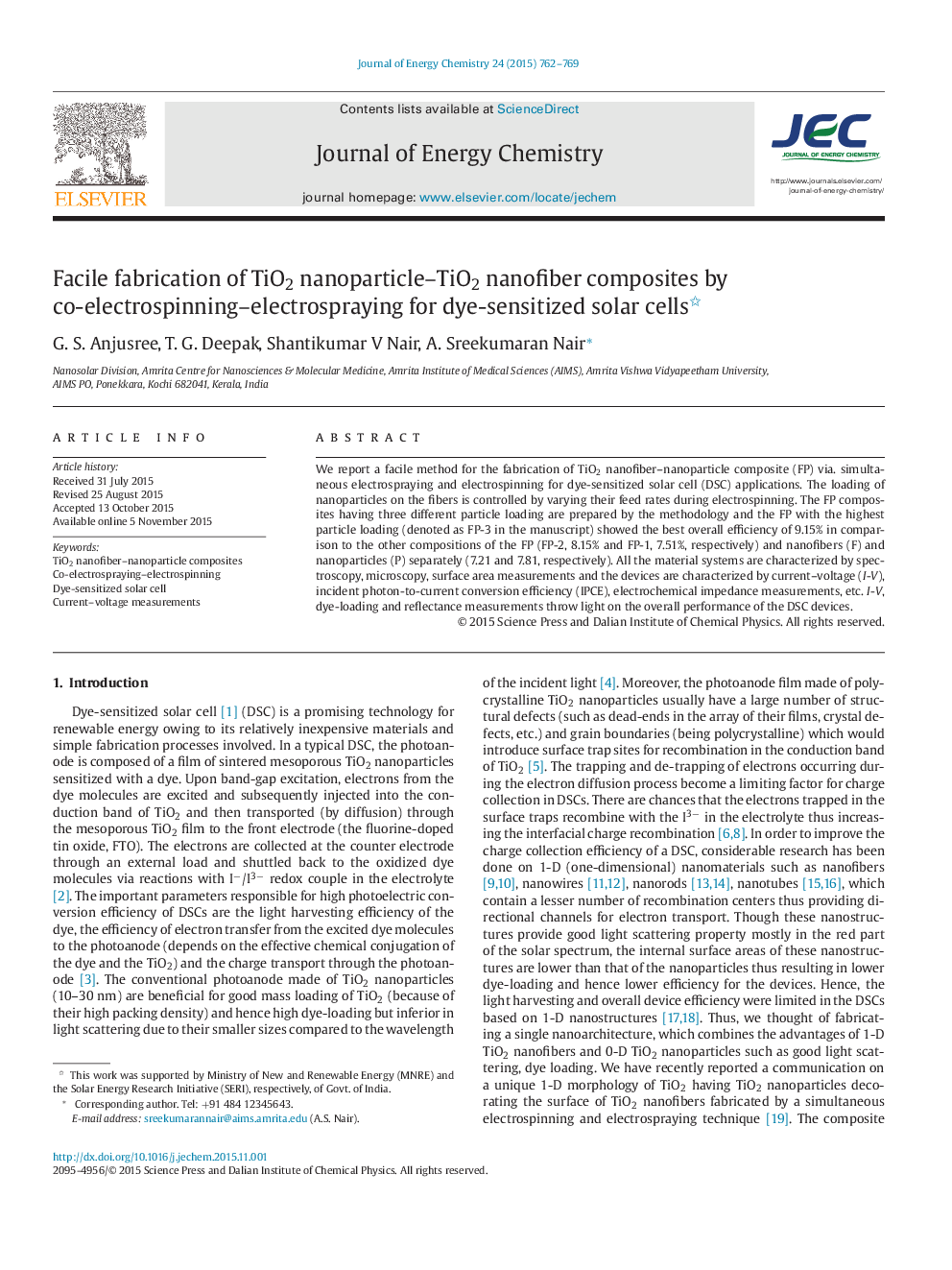| Article ID | Journal | Published Year | Pages | File Type |
|---|---|---|---|---|
| 63801 | Journal of Energy Chemistry | 2015 | 8 Pages |
We report a facile method for the fabrication of TiO2 nanofiber–nanoparticle composite (FP) via. simultaneous electrospraying and electrospinning for dye-sensitized solar cell (DSC) applications. The loading of nanoparticles on the fibers is controlled by varying their feed rates during electrospinning. The FP composites having three different particle loading are prepared by the methodology and the FP with the highest particle loading (denoted as FP-3 in the manuscript) showed the best overall efficiency of 9.15% in comparison to the other compositions of the FP (FP-2, 8.15% and FP-1, 7.51%, respectively) and nanofibers (F) and nanoparticles (P) separately (7.21 and 7.81, respectively). All the material systems are characterized by spectroscopy, microscopy, surface area measurements and the devices are characterized by current–voltage (I-V), incident photon-to-current conversion efficiency (IPCE), electrochemical impedance measurements, etc. I-V, dye-loading and reflectance measurements throw light on the overall performance of the DSC devices.
Graphical abstractA facile method for the fabrication of TiO2 nanofiber–nanoparticle nanohybrids for dye-sensitized solar cell applications via co-electrospraying–electrospinning route. Optimized nanohybrid composition with higher particle loading showed a power conversion efficiency of 9.15%.Figure optionsDownload full-size imageDownload as PowerPoint slide
